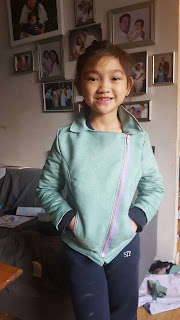It's fall and not stiflingly hot anymore, and we could use some good bread in the house.
 |
| Cinnamon sourdough brioche loaf -- look at that spongy light crumb! |
My sourdough mother has been underemployed all summer because of... well, life. But I took it out and fed it Friday night in anticipation of baking Saturday, and the poor creature rallied. (I have a liquid sourdough, fed equal parts flour and water by weight. If you have a biga or firm starter, you'll pull back on the flour in the dough to compensate.)
Brioche, of course, is an enriched yeast dough bursting with egg and butter. It's a natural for pre-ferments, but it's one dough that many pastry people make with commercial yeast and the straight method... because all that butter and egg make brioche the dough to turn to for breakfast rolls, burger buns, and various other "plain but not plain old" uses, often on the fly. It combines nicely without too much attention in a standing mixer, then you just let the mixer do its thing to develop the structure before rising and shaping.
It's nice to be able to take the time to make a brioche of value as its own self and not just a hapless vehicle. I do like the bright color that a lot of yolks gives the dough -- this uses a lot of egg and comparatively little butter. The yolks also give these great keeping qualities -- I've had a loaf on the counter for more than a week and it's still tender.
As you can see, this will make three household-sized loaves -- I like to make multiples... more on this on the next post. If you don't have freezer space or receptive co-workers/neighbors/etc, you can divide the quantities for one loaf easily.
35 g milk or water
300 g sourdough starter, fed 6-8 hours before
256 g Egg yolks
7 g Granulated yeast
516 g bread flour
56 g sugar
11 g salt
113 g unsalted butter, cool but not cold
The way I usually mix brioche is to put the liquids in the bowl with the yeast first and mix that together with the paddle to distribute the granules evenly. Add the bread flour, salt and sugar and mix for 5 or 6 minutes on low speed with the hook until the dough comes together... scrape down into the divot to get any moisture encapsulated there. It will look stiff and undermixed -- that's fine.
Add the butter in chunks and mix that in, then change to medium speed and let the dough hook do its job to get the (formerly scraggly) dough into a smooth, elastic and supple dough that hangs together off the hook and cleans the sides of the bowl. If it doesn't, add a handful more flour, but it will take a good 7-10 minutes to get to this anyway -- yay for stand mixers!
When I make bread at home I just cover the bowl with plastic and let it rise in the mixer bowl, but if you have another use for your mixer bowl, turn the dough out into a buttered container that will accommodate it while it doubles its size.
Have some loaf pans ready -- for plain loaves, just buttered or sprayed. For cinnamon/sugar, parchment or foil will ensure that they come out with all the yummy nuggets intact.
Knock the (by now puffy and wobbly) dough out onto a floured counter and nudge it into a rectangle to divide easily into 3 pieces. Try not to handle the sticky dough too much or the butter will start leaking out and it will get even softer and stickier.
For a plain loaf, fold one piece like a letter -- two edges onto the center. Ease it into the prepared pan, trying to aim the seam into the middle.
For a cinnamon loaf, you can sprinkle cinnamon sugar (200 g sugar/25 g cinnamon) on the rectangle, fold it and place it in the pan that way, or the more fun, less pristine way which is the "monkey bread method": have the cinnamon sugar in a wide bowl; cut off chunks of the risen dough about the size of golf balls or prune plums -- 1 1/4" or so? -- and toss them in the cinnamon sugar. Pile them in the loaf pan, still handling lightly.
Cover the loaf (loaves) with a towel and let the dough rise until it comes up to the top of the pan -- depending on how lively the starter is, it will take about an hour.
Bake in a 350 oven until the brioche is well-browned and the crust is springy/firm to the touch. The cinnamon loaf will color much faster because of the sugar on the outside, but it should take about 30 minutes.
 |
| the plain loaf -- nicely golden. |
Quick note: apologies for the lack of pix in this post... I'm still trying to figure out good lighting in this new kitchen.



























